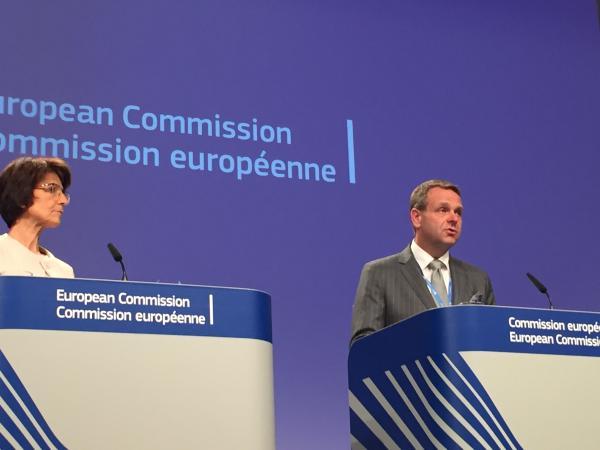
EU-Commissioner Marianne Thyssen and Vice-President Jan Vapaavuori of the European Investment Bank (EIB) have presented a new Guide to the Statistical Treatment of Public Private Partnerships in Brussels today. The guide is a joint effort of Eurostat (the Statistical Office of the European Commission) and the European PPP Expertise Centre (EPEC) of the EIB.
Investment is a key priority for the Commission. This is why just weeks into office, the European Commission, with the EIB as its strategic partner, launched the Investment Plan for Europe in November 2014. The aim of the Plan is to support economic recovery by stimulating investment in the real economy. The Investment Plan for Europe uses public investments and guarantees to engage private capital and expertise. Public-Private Partnerships, PPPs, are expected to play an important role in getting Europe’s investment in infrastructure back on track.
The public sector’s decision to procure projects as PPPs, however, is often influenced by expectations as to their statistical treatment (i.e. impact on government debt and deficit figures). Uncertainty in how to assess the statistical treatment of PPPs can therefore create difficulties and delays in the various stages of preparation and implementation of investment projects.
While the Guide does not change the rules used by Eurostat in classifying PPPs, it analyses the most common features of current PPP contracts in the light of these rules and gives a clear overview of their potential impact on Government finances. The guide will help Member States and other PPP stakeholders to better understand the impact that the features of PPP contracts have on government balance sheets and will assist public authorities in taking well-informed decisions when preparing and procuring their PPPs. This Guide is also a helpful tool to provide clarity to public and private promoters in the context of the investment plan and remove perceived barriers to investment. Technical assistance facilities like the European Investment Advisory Hub set-up by the EIB and the Commission would use it to assist in any potential request.
“Eurostat’s rules on PPPs had become a hot topic, in particular in the context of the Investment Plan for Europe", said Jan Vapaavuori, EIB Vice-President responsible for Advisory Services, “I am confident that the Guide will considerably help public authorities prepare projects with more confidence, using the opportunities offered by sound PPPs to mobilise private capital and expertise and ultimately generating more investment on the ground to improve citizens’ lives.”
Marianne Thyssen, Commissioner responsible for Eurostat: said "I am very pleased to launch this new “Guide to the Statistical Treatment of PPPs”. It is aimed at all stakeholders – both public and private sector – involved in commissioning, financing and undertaking PPPs, and it will assist both public and private authorities in taking well-informed decisions when using PPPs, with a clear understanding of their impact on Government balance sheets. I hope this new Guide will facilitate project promoters considering applying for EFSI support under the Investment Plan."
According to data collected by EPEC, over the last five years 345 new PPP projects were closed in 16 EU Member States, for the total value of over EUR 65 billion. Over this period, the two most active PPP markets in the EU were the UK (with 124 deals worth over EUR 23 billion) and France (with 75 projects worth over EUR 18 billion).
The full guide is available for download here

Photographer: EIB ©To be defined
Download original